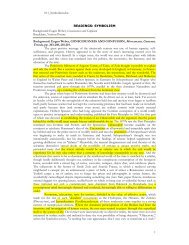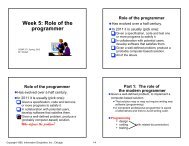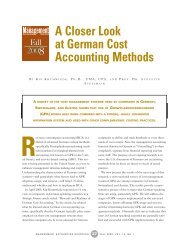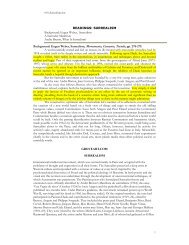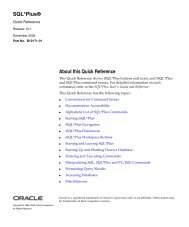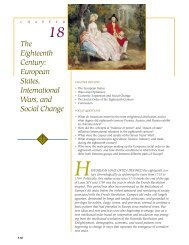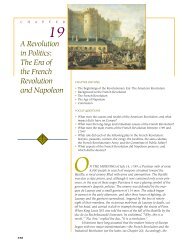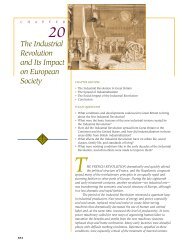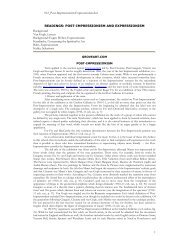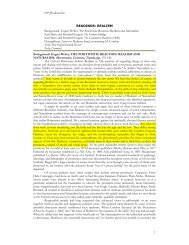Stat 304 Take-Home Quiz #1
Stat 304 Take-Home Quiz #1
Stat 304 Take-Home Quiz #1
You also want an ePaper? Increase the reach of your titles
YUMPU automatically turns print PDFs into web optimized ePapers that Google loves.
<strong>Stat</strong> <strong>304</strong> <strong>Take</strong>-<strong>Home</strong> <strong>Quiz</strong> <strong>#1</strong><br />
September 10, 2004<br />
Dr. John G. Del Greco<br />
Instructions.<br />
Name<br />
• You must work alone on this quiz. If you need hints on any of the problems, please<br />
email me or see me during my office hours.<br />
• You should always put maximum effort into the writing up your answers.<br />
will be graded on the quality of the presentation as well as on correctness.<br />
Answers<br />
• This quiz is due by 1:25pm on Wednesday, September 15.<br />
Undergraduate/Graduate Problems<br />
The following problems must be completed by both undergraduate and graduate students.<br />
1. LetE, F ,andG be three events. Find a set expression (using union, intersection,<br />
and complementation) for each of the following events.<br />
(a) only E occurs<br />
(b) both E and G, but not F occurs<br />
(c) at least one of the events occur<br />
(d) at least two of the events occur<br />
(e) all three events occur<br />
(f) none of the events occur<br />
(g) atmostoneoftheeventsoccur<br />
(h) atmosttwooftheeventsoccur<br />
(i) exactly two of the events occur<br />
2. Find the simplest expression for the following events. A simplest set expression is<br />
deÞned to be the one that minimizes the number of sets and set operations.<br />
(a) (E ∪ F ) ∩ (E ∪ F c )<br />
(b) (E ∪ F ) ∩ (E c ∪ F ) ∩ (E ∪ F c )<br />
(c) (E ∪ F ) ∩ (F ∪ G)<br />
3. Let S = {0, 1, 2,...} be a sample space, and deÞne a probability function on S by<br />
P (j) =(1− α) j α for every j, andforsomeÞxed α, 0
(a) Find the probability that the equation has two distinct real roots.<br />
(b) Find the probability that the equation has only one real root.<br />
(c) Find the probability that the equation has complex roots.<br />
5. A number is chosen at random from the set {1, 2,...,1000}. What is the probability<br />
that the number is divisible by either 3 or 5? (Hint: To Þnd the number of numbers<br />
in {1, 2,...,1000} divisible by k, round down the number 1000/k. Also, note that a<br />
number is divisible by 3 and 5 if and only if it is divisible by 15.)<br />
6. Let E and F be events. Prove that P (E ∩ F ) ≥ P (E)+P (F ) − 1. (Hint: Use the<br />
formula for the probability of a union of two events.)<br />
7. Text, p. 49, #2.<br />
Graduate Problems<br />
The following problems must be completed by graduate students only. Undergraduates who<br />
submit solutions to any of the following problems will receive no extra credit for doing so.<br />
8.ProvethatitisnotpossibletodeÞne a probability function on a countably inÞnite<br />
sample space in which each outcome is equally likely. (Hint: Suppose such a probability<br />
function P exits, and let S = {1, 2,...}. Since each outcome is equally likely,<br />
P (i) =α for some α, 0
12. Let f n denote the number of ways of tossing a fair coin n times so that successive heads<br />
never appear.<br />
(a) Prove that<br />
f n = f n−1 + f n−2<br />
for n ≥ 2 if f 0 =1and f 1 =2. (Hint: Break the analysis up into two cases.<br />
The last toss is a tail, and the last toss is a head.)<br />
(b) Find the probability that in 10 tosses of the coin no successive heads appear.<br />
3



